 Image search results - "Tsu" Image search results - "Tsu" |

Dai-hiwatari Festival, Mt. TakaoMore pictures here
|
|
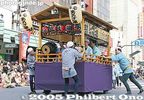
Sadly, the Tokyo Jidai Matsuri is no longer held. It was held annually on Nov. 3 (Culture Day) in Asakusa, Tokyo from 1988 to 2013.The festival was discontinued due to a money scandal by Taito Ward. Tokyo Jidai Matsuri (Festival of Historical Periods) was a parade tracing the history of Tokyo with over 1,600 people dressed in the respective period's costume. This is the lead float playing music. It took about an hour for the parade to reach Kaminarimon Gate.
Lead Float: Edo festival music played by children. Kodomo Edo-bayashi yatai
先導 子供江戸囃子屋台
|
|
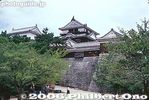
Matsuyama Castle
|
|

One of the Big Three Festivals in Tohoku, the Kanto Matsuri has men in happi coats balancing tall paper lantern-bedecked bamboo poles, called kanto, on their foreheads, shoulders, hand palms, or hips. Held on Aug. 3 to 6 near JR Akita Station.A kanto is carried to the festival site before nightfall.
|
|

Kenrokuen is one of Japan's three most famous gardens (besides Korakuen in Okayama and Kairakuen in Mito, Ibaraki). The garden was originally the castle garden for Kanazawa Castle. Katsurazaka Entrance to Kenrokuen Garden 桂坂口
|
|

Established in 1617, Tsukiji Hongwanji temple is the Tokyo headquarters of the Nishi Hongwanji Jodo Shinshu sect. The present temple, based on Indian architecture, was built in the 1930s.The temple is the only one in Japan which is under the direct control of the sect. Its head priest is the Monshu Abbot himself. April 8 is observed as Buddha's birthday, called Hana Matsuri ("Flower Festival) in Japan.
|
|

One of Kyoto's Big Three Festivals held on May 15. The Aoi Matsuri's colorful procession of over 500 people in Heian-Period costumes start off at the Kyoto Gosho Imperial Palace and head for the Shimogamo and Kamigamo Shrines. Kyoto Gosho Imperial Palace 京都御所: The first ox carriage waits for the procession to start. The ox carriage is called a gissha. 牛車
|
|

The Kusatsu Shukuba Matsuri Festival is held on April 29 to celebrate Kusatsu's history as a post town on the Nakasendo and Tokaido Roads. Numerous events and activities are held such as flea markets, street & stage performances, and Japanese danThis was the first time I saw hula dancing in Shiga. Surprised to see hula dancing (Kusatsu Station plaza).
|
|
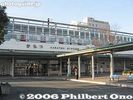
JR Karatsu Station
|
|
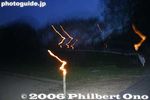
Held annually on May 4, the Misaki Shrine Fire Festival (hi-matsuri) has local people carry 2-meter long torches from their homes to the shrie where a 5-meter tall pile of bamboo is lit to make a towering inferno.A taiko drum is also carried and beaten.
|
|
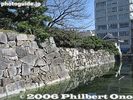
Higo Moat and turret (?)This is near the Karatsu City Hall. From Karatsu Station, it takes about 25 min. to walk to the castle tower.
肥後堀
|
|

Held on Dec. 2-3 by Chichibu Shrine, Chichibu Yomatsuri is one of Japan's Big Three Hikiyama Float Festivals. Ornate floats are pulled along the city's main streets until they reach a large plaza at night where they are lit with lanterns. Fireworks then serve as the climax. Photo: Seibu Chichibu Station
|
|

Yasukuni Shrine during the Mitama Matsuri before dark.
|
|

Held for two evenings on Aug. 14-15 during the obon season, people light their torches at Gosha Shrine and proceed to Hibarino park where the torches are thrown up to a large pine tree. The more torches get stuck on the tree, the better the next harvest.This is Hibarino park. The pine tree on the right of the small hill is the target for the torches. This park also serves as the Otabisho during the Hino Festival.
|
|

JR Tsuruga Station
|
|

Kanayama Jinja Shrine is a small shrine within the grounds of the Wakamiya Hachimangu Shrine near Kawasaki Daishi Station. On the first Sun. of April, it holds this now-famous Kanamara Festival nicknamed the Phallus or Fertility Festival. Festival starts at 11 am. But a large crowd was already there well before that time. Entrance to shrine on the day of the Kanamara Festival. (If you're below age 18, please leave now.)
|
|
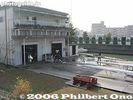
Seta Rowing Club's 2-story clubhouse located in Otsu, Shiga Prefecture. The club is a registered NPO. The club is named after Seta River at the southern tip of Lake Biwa. Regattas are also held on the river, Lake Biwa's sole outflowing river.
|
|

At 2 pm, the 18 portable shrines gather at the Ohara Fishing Port. 大原漁港に参集
|
|

Kawagoe Matsuri is a parade of ornate floats during the day and evening in the city's old town of traditional buildings. Around 15 floats appear during the festival. Held on the third weekend in Oct. Main road where the festival will climax in the evening.
|
|

Moving the Neputa floats into position.Held during Aug. 1-7, the Hirosaki Neputa Matsuri is without the rowdiness of the Aomori Nebuta Matsuri. Instead of the haneto, there are many children pulling the floats with ropes. The main floats are fan-shaped and more two-dimensional and lantern-like. As with the Nebuta floats, the Neputa floats are handpainted and illuminated from the inside. There are two parade routes which are followed alternately on different nights. On the 7th, there is only a daytime parade from 10:00 a.m. If it rains on any day, the parade may be canceled.
|
|
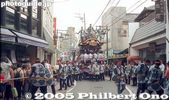
Held in July, Narita Gion Matsuri Festival has ornate floats pulled on the streets of Narita and to Narita-san temple. Pulling a float on the street
|
|

From late April to early May, five long strings of giant carp streamers swim in the air high above the Sagami River in Sagamihara, Kanagawa. This event was started in 1988.
|
|

The biggest taiko drum festival in the Kanto region is held annually in April. Various taiko drum troupes perform for two full days on various outdoor stages in Narita, including the main stage in front of the Narita-san temple.
|
|

One of two giant kitesThis festival has two giant kites and two smaller (but still large) kites. Resting on its side, the kite was scheduled to fly at 2 pm. The kanji characters read "Michi no Eki" in reference to a new train station built in the town.
|
|

Festival's focal pointThis grass hut is at the center of the festival site which is within the Sakitama Tumuli Park. It will be burned later in the evening for the festival's climax.
|
|
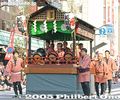
This page is a complete English guide to all the groups that appear in the parade. The parade assembles behind Sensoji Temple and starts at 1:30 pm from Nitenmon gate. The procession then goes down Umamichi-dori street, passes by Matsuya Department Store.先導 子供江戸囃子屋台
|
|

Entrance to castle tower
|
|

The festival is held along a straight, 800-meter section of San'o Odori Road, a 20-min. walk from Akita Station.In the evening, the main event starts at 6:38 p.m. with a taiko drum-beating performance or minyo dancers on San'o Odori Road. At 7:17 p.m., some 200 kanto are carried into the street to the sound of flutes and taiko drums. At 7:40 p.m. following a brief address by the city's mayor, the performance begins as the kanto are raised all at once.
|
|

Kenrokuen is classified as a "kaiyu-shiki teien" (回遊式庭園) or "circular-strolling Japanese garden." It's a common and classic Japanese garden design where you simply walk around the garden, usually around a central pond.
|
|

Tsukiji Hongwanji temple gate with wisteria crest.The emblem is a wisteria flower and symbol of the Jodo Shinshu sect.
|
|
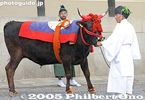
The bull was mooing all the time and was very restless.Do bulls moo or do they snort? This was making a loud noise.
|
|
|
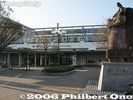
JR Karatsu Station
|
|
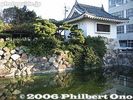
Turret (?)
|
|
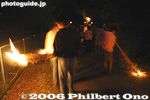
Procession of local residents carrying torches to the shrine. Map
|
|

In front of Seibu Chichibu Station
|
|

Being my first regatta, I was at first daunted by the rowing terminology for the different types of boats.
|
|
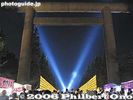
Yasukuni Shrine's main torii during Mitama Matsuri
|
|

The Azuchi Nobunaga Festival's main venue was here, next to Azuchi Castle (hill on right). MAP
|
|

Entrance to Gosha Shrine. 五社神社
|
|

Shrine banners and cherries in full bloomThe red banner says "Kanayama Jinja" with an phallus (erect) logo on the top.
|
|
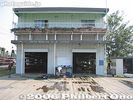
Seta Rowing Club's clubhouse. Boats are stored on the bottom floor, while the 2nd floor has office space, ergo machines, meeting room, locker room, etc. Web site here
|
|

They run around while carrying a portable shrine.
|
|

One of the picturesque streets of the city.
|
|
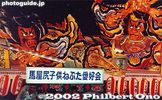
The Nebuta floats are judged in a contest and various awards are given.The Nebuta floats are beautiful objects of light. They are swung left and right and all around. The crowd applaud whenever the Nebuta faces them directly. The sculpture's lights inside are powered by a noisy generator on wheels under the float. The parade progresses quickly and the splendid Nebuta figures pass by one after another. You have to be there in person to feel the power and presence of the giant Nebuta. They represent the very soul and spirit of men. It's enough to give you goose bumps.
The Nebuta floats are judged in a contest and various awards are given. The best ones are preserved at the Nebuta-no-Sato (Nebuta Village) after the festival.
|
|
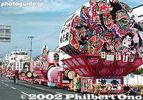
There are three types of floats: the large fan-shaped Neputa, Nebuta-type figures, and the children's small Neputa.I got to Hirosaki early enough before the parade to see the floats lined up at the starting point. Hirosaki is a 30-min. train ride from Aomori, and best known for Hirosaki Castle during cherry blossom season.
|
|

Pulling the float, Narita Gion Matsuri
|
|

There are five rows of streamers. In Japan, the koi carp is regarded as a symbol of valiant manhood because it swims up the river against the rapids.
|
|
|
|
|

Offerings
|
|

From Matsuya Department Store, the procession turns right into Kaminarimon-dori street which passes in front of the famous, giant red lantern called Kaminarimon Gate. Lead float with Edo festival music played by children. 先導 子供江戸囃子屋台
|
|
|
|

A kanto is carried into the street to the sound of flutes and taiko drums.
|
|

Temple gate and flag
|
|

Norijiri horseman leads the procession. 乗尻The procession, called Roto-no-Gi (路頭の儀), is actually one of three rites performed during the festival.
|
|

The Kusatsu-juku Honjin is decorated with curtains. MAP
|
|

Kunchi monument at Karatsu StationKaratsu's most famous festival is the Hikiyama Kunchi Festival where large floats are paraded around.
|
|

The turret turned out to be a public toilet...Looked nice enough to photograph, but when I walked around it, it smelled like the toilet it was.
|
|
|

Main street crowd
|
|

Carrying back a single sculling boat
|
|

Promenade to the shrine
|
|
|

Pre-festival event held in the afternoon, Yamato Awa Odori
|
|

Gosha Shrine torii
|
|

Pumping (or humping) the...
|
|
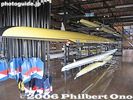
Oars and boats stored on the bottom floor. The club offers 2-hour rowing lessons on Sundays during May to Nov. Address: 6-1 Ogaya, Otsu, Shiga 520-2144 Japan. Phone/Fax: 077-545-9961, Email: info@setarc.jp
|
|
|
|

Children lead the way for a float at Kawagoe Festival.
|
|

According to one story, the Nebuta has its roots in the 8th century.According to one story, the Nebuta has its roots in the 8th century when there was a rebellion in Ezo (Hokkaido). Ordered by Emperor Kanmu to quell the rebellion, generalissmo Sakanoue no Tamuramaro went to Ezo. However, he failed to capture the elusive chief of Ezo who went into hiding in the mountains.
Sakanoue then set up a trap with large votive lanterns which were lit and accompanied by taiko drums and flutes. This lured the curious Ezo chief out of hiding and led to his capture. The large lanterns were the forerunner of the Nebuta.
|
|

Lunch break
|
|

Tired from walking, Narita Gion Matsuri
|
|

The cable length is 250 meters and 13mmm thick. There are about 1,200 carp streamers. They are reused every year and donated by local families. (I also noticed a few advertising carps.)
|
|
|
|

Festival siteIt is a circular site with people sitting along the perimeter.
|
|

Lead float with Edo festival music played by children. The names of the children playing are written on the red lanterns hanging above. Kodomo Edo-bayashi yatai 先導 子供江戸囃子屋台
|
|
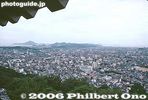
View from top floor
|
|
|

Play room for kids on Hanamatsuri
|
|

10:30 am: Starting point at Kyoto Gosho Imperial Palace 京都御所 出発The procession is ready to depart.
|
|

Shukuba Odori dance in the shopping arcade.Held 11:00 - 12:00
|
|

Higo Moat
|
|

The torch procession rings out.
|
|
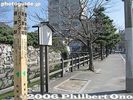
Sightseeing marker in English
|
|

Floats parked along the main drag.
|
|

The place was not as crowded as you would think.
|
|

Stage entertainment (Azuchi Castle ruins in background).
|
|

Spotlights create a silhouette of the statue of Omura Masujiro (1824-1869) 大村益次郎, founder of Japan's modern army.
|
|
|

The festival is wildly popular with people from overseas.The shrine had various phallus props to pose with.
|
|

Many boats are made in Italy.
|
|

They keep going round and round. Quite rowdy.
|
|
|

The first Nebuta was a large paper lantern made in 1593.According to historical records, the first Nebuta was a large paper lantern made in 1593 by Lord Tamenobu of Tsugaru (now part of Aomori) for the Bon festival in Kyoto. The Nebuta Festival itself started in the late 17th century.
|
|
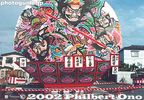
Fan-shaped Neputa float.The painted picture on the front of the Neputa depicts mostly warriors and on the back are beautiful courtesans.
|
|
|
|
|

Lowering the kite
|
|

SpectatorsThese people are sitting in the best area to view the festival.
|
|
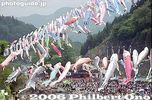
I would say this is one of Japan's top five best places to see carp streamers at Kanna-machi, Gunma.
|
|

View from top floor
|
|

The largest kanto is 12 meters high, weighs 50 kilograms, and has 46 paper lanterns. The smaller kanto are 5 and 7 meters high. The kanto symbolizes a ripe rice plant with unhusked golden grains (the paper lanterns). The festival is therefore a prayer for a good harvest.
|
|

Hanamatsuri altar
|
|

The procession basically consists of two columns: The Hon-retsu which includes the procession's highest-ranking official called Chokushi. It consists of men. The second and longer column is the Saio-dai-retsu consisting of women.
|
|

Start of Kusatsu Jidai Gyoretsu Procession 草津時代行列
|
|
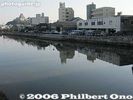
River and castle in the distance
|
|

Towering inferno of bamboo on fire. The shrine has a 5-meter tall pile of bamboo which is lit to make a towering inferno within the shrine grounds. Very dramatic.
|
|

Hikiyama Float Exhibition Hall曳山展示場
|
|

Ornate float is pulled along the streets toward Chichibu Shrine.
|
|

Rowing team from Nagahama
|
|

A bon dance around the base of the statue.
|
|

Demonstration of matchlock guns, Azuchi Nobunaga Festival in Azuchi, Omi-Hachiman.
|
|
|

Dickhead hat. Actually, I don't know what they call it, but that's what I call it.
|
|
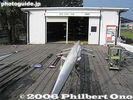
Right across the clubhouse is the Annex boat house.
|
|
|
|

Preparation for building a Nebuta sculpture starts right after the preceding Nebuta Festival.Preparation for building a Nebuta sculpture starts right after the preceding Nebuta Festival. During fall and winter, Nebuta artists conceive the ideas for the next year's Nebuta floats. The Nebuta figures depict some scene from kabuki or Japanese/Chinese history or legend. Once a theme is chosen, a sketch or design is made and presented to the sponsor (usually a company). Upon approval, actual construction begins.
During February and March, the smaller parts of the Nebuta figure, such as the hands and fingers, are constructed at home with steel wiring.
In May, a tent village is put up. In each tent, full-scale construction of the Nebuta is executed until the end of June. Steel wiring and slender pieces of wood are used to build the frame and props.
After the skeleton of lumber and wire is completed, about 400 light bulbs and fluorescent lights are installed inside. The lights are strategically placed so that the shadow of the lumber pieces is not cast outward.
Then comes the tedious task of pasting washi paper on the wire frame. This is done by highly-skilled housewives who have been doing it for 10 to 20 years. About ten of them work on one Nebuta, taking about 10 days. Since they have to work dextrously in all sorts of contorted positions, it is not a popular job and fewer women are willing to do it.
The paper is cut to fit the exact segment (usually rectangular) on the wire frame. A toothbrush is used to apply glue on the wiring and the paper is pasted and cut. Extra care is taken when the figure's face is papered. About 2,500 sheets of 531 x 393 mm paper are consumed in the process.
|
|

The floats were jerked left and right and spun around.At 7:00 p.m., the taiko drum-beating started and the floats left the starting point one by one. The beat of the taiko drums was the same as that in the Nebuta Matsuri. A few men stood on the top of the large Neputa and collapsed the hinged, top portion to clear overhead power lines. The floats were jerked left and right and spun around.
|
|
|
|
|
|

EntertainmentAn outdoor stage provides a variety of entertainment during the day.
|
|
|
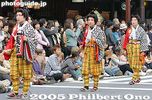
Tekomai geisha existed since the Edo Period. They served as side entertainment at festivals. They only sing traditional chant-like songs called kiyari originally sung by lumberers hauling wood. 手古舞These tekomai did not sing, so they might not be real. When they sing, they hold a fan to their mouth.
手古舞
|
|
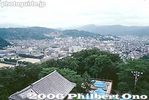
View from top floor
|
|
|

Pouring sweet tea over the BuddhaWhen the Buddha was born in Lumbini Garden in Nepal, sweet rain is said to have fallen. Thus, sweet tea is poured over the baby Buddha statue in the Hanamatsuri altar.
|
|

"Heian" comes from "Heian-kyo," the former name of Kyoto city.
|
|

Bridge to castle城内橋
|
|

Misaki Shrine Fire Festival in Aisho. The shrine has a 5-meter tall pile of bamboo which is lit to make a towering inferno within the shrine grounds. Very dramatic. Also see the video at YouTube.
|
|
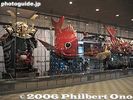
Inside Hikiyama Float Exhibition HallKunchi festival floats are displayed.
曳山展示場
|
|
|
|
|

They came from Hikone. 鉄砲隊演武(彦根鉄砲隊)
|
|

Kusatsu Shukuba Matsuri is held on April 29 to celebrate Kusatsu's history as a stage town on the Nakasendo and Tokaido Roads. The main highlight is this Kusatsu Jidai Gyoretsu procession from 11:45 am to 2 pm. This is the Tokaido Road.
|
|

Pile of straw to be lit. The fire is used to light all the torches.
|
|

Carving daikon. Anybody can join in and carve. 大根削りLater to be auctioned off.
|
|
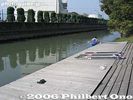
Club's boat dock. This narrow canal leads to Lake Biwa.
|
|

A man who got bumped and fell is quickly brought to his feet by other people.
|
|

Tekomai geisha lead the way for a float at Kawagoe Festival.
|
|
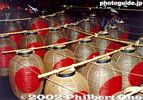
During the festival period, several events are held in the daytime. One is the "Kanto Challenge Corner" where the first 100 applicants on each day can try balancing the smaller kanto. Each participant receives a "Kanto Master" certificate. There is also the Kanto Myogi (Stunt) Contest where group and individual participants compete to be the year's best kanto technician.
|
|
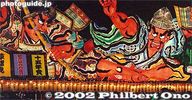
There are fewer than 30 Nebuta artists in the world.The giant white figure is brought to life by a Nebuta artist who paints it all by himself. First, the figure's basic outlines are painted with black sumi ink. Liquid paraffin is then applied to prevent the ink from running. Then colored dyes are painted or sprayed. When it comes to the face, very special care is taken. If he makes a mistake on the face, the paper is torn away and new sheets are pasted on. The very last thing painted on the Nebuta are the eyeballs. They give the sculpture its soul.
The completed Nebuta is lifted from the ground by 50 people onto a 1.5-meter-high wheeled platform. An illumination test symbolizes the Nebuta's completion. To ensure easy movement on the street, the Nebuta float is restricted to a width of 9 meters and a height of 5 meters. The float also bears the name of the sponsoring company or organization. It costs 10 to 20 million yen to build and operate a large Nebuta float. Corporate sponsors think it's money well spent since the Nebuta makes a great advertising vehicle and enhances the corporate image.
Top Nebuta artists are given over 3 million yen to cover labor and materials costs. By the time all the bills are paid, the artist has less than one-third the amount as compensation. Obviously, Nebuta artists are grossly underpaid for their highly-appreciated work. It really is a labor of love, and not for the money.
There are fewer than 30 Nebuta artists in the world, and only three of them work as full-time Nebuta artists. Since there is no money in it, would-be Nebuta artists and apprentices are few. To make it worse, there are no governmental measures to help resolve the problem.
|
|

Nebuta-type float with a paper sculpture of a figure.
|
|
|
|
|
|

Festival participantsThey are dressed in the costume of the ancient Kofun (Tumuli) Period of Japan. They will be carrying torches from the nearby tumuli.
|
|

Sagami River Koi-nobori
|
|

Tekomai geisha costume is partially masculine with trousers instead of skirts. Their right shoulder is "exposed" showing a flower design. They carry a red paper lantern imprinted with their names and use their right hand to drag a wand."Asakusa" is written on her lantern. 手古舞
|
|
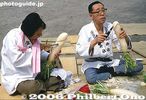
Carving daikon (old photo). These men were really good at carving the daikon.
|
|
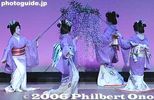
1. Fuji Murasaki (Purple Wisteria) by Kagurazaka geisha
|
|

Karasaki Pine Tree in Kenrokuen Garden, Kanazawa, Ishikawa Pref.
|
|

Hanamatsuri celebrates the Buddha's birthday on April 8. This is Tsukiji Honganji in Tokyo.The flowers symbolize Lumbini Garden where the Buddha was born in present-day Nepal.
|
|

The Heian Period was when Kyoto was the capital of Japan where the Emperor resided.
|
|

Kusatsu Shukuba Festival, Shiga Pref. 大奥夢道中
|
|

Jonai Bridge to castle城内橋
|
|
|
|
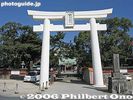
Karatsu Shrine
|
|
|

Azaleas in full bloom along the lake edge
|
|
|
|
|

White and red torii
|
|

Rowing exercise machines called "ergometers" or "ergo" or "indoor rower." In Japan, they call it "ergo." エルゴThe machine measures the energy you expend rowing. Also measures how fast and far you rowed if you were on water. They even have ergo rowing contests which is a sport itself.
|
|

Nice mikoshi.
|
|

Tekomai
|
|

Balancing act. The kanto symbolize rice plants ready to be harvested.This is perhaps the most anxiety-provoking festival. Men in happi coats balance these tall paper lantern-bedecked bamboo poles, called kanto, on their foreheads, shoulders, hand palms, or hips. While watching, you can't help thinking, "Will it fall?" or worse, "Will it fall on me?" The candle-lit paper lanterns contrasted nicely against the dark sky.
|
|

The Nebuta festival is a great visual spectacle as well as a sound delight.The Nebuta festival is a great visual spectacle as well as a sound delight. The resounding beat of the taiko drums and the shrill of the flutes give the festival its soul. These are placed at regular intervals throughout the parade. The taiko beat is simple and repetitive, yet powerful and infectious.
|
|
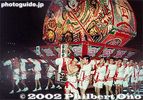
Neputa float. All the floats are on wheels so these people are not actually carrying the floats.
|
|
|
|

Patch up
|
|

TumulusCherry trees are at the top.
|
|
|

Tekomai geisha
|
|

Carving daikon. Since some activities are conducted on the ground, the festival is also called Jibeta (Ground) Matsuri.Once upon a time, the festival was still mostly a local event with much fewer people.
|
|
|
|

Baby Buddha statueLadles are provided for pouring the sweet tea over the Buddha. Sweet tea is also provided to worshippers. It symbolizes the sweet rain that fell when the Buddha was born.
|
|

The Aoi Matsuri (Festival) used to be called Kamo-sai, after the name of the two shrines which hold the festival.賀茂祭
|
|
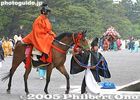
One of six court dancers called maibito. 舞人
|
|

Kusatsu Shukuba Festival, Shiga Pref.
|
|
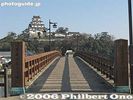
Jonai Bridge to castle城内橋
|
|
|
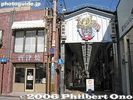
Gofuku-cho shopping arcade
|
|

Stage at Chichibu Shrine
|
|
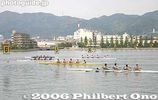
Four-man boat race. There were also foreign rowers from international schools.
|
|

Demonstration of matchlock guns, Azuchi Nobunaga Festival.Even these people had to obtain police permission to bear and fire these feudal-era guns.
|
|

Spotlights hit the torii.
|
|

Torches
|
|

The rowing lesson starts with an ergo workout.
|
|

One thing unusual about this festival is that they carry the mikoshi with their hands and arms only, and not on their shoulders.
|
|
|

The objective is to balance the kanto steady enough so that the candles in the paper lanterns don't go out. The performer has to move about deftly whenever there is a gust of wind or when the pole starts to bend over. After attaining a steady balance, the skillful technician shifts the pole to other parts of his body while his surrounding colleagues clap and shout "Dokkoisho! Dokkoisho!"
Occasionally, someone loses his balance and the pole and lanterns come crashing down on the power lines, safety ropes, or right on the crowd. When I was there, one came crashing down on the crowd I was in. We all screamed. But it was surprisingly harmless. All the lanterns flamed out and some lanterns had holes. The lanterns were just relit and raised again. Falling kanto added real drama.
|
|

Distinctly-costumed dancers called haneto.Each Nebuta float is accompanied by thousands of distinctly-costumed dancers called haneto. The huge Nebuta overlook a sea of haneto out in front with their colorful flowered straw hats bobbing up and down. They jerk and jingle and hop all over the road while shouting "Rasse, Rasse, Rassera!" They twist and shout amid reverberating taiko drums and flutes.
Sometimes they form a small circle and dance in unison. Their costumes have little bells which often fall off. Little kids run and pick up the fallen bells on the road. It is a frenzied celebration. If you want to join in the fun, you have to rent or buy a haneto costume (for around ¥10,000).
|
|
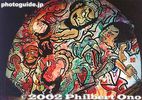
Closeup of a Neputa float.Theories concerning the origin of the Neputa are identical to those of the Nebuta. However, in the 1880's, the Neputa gradually changed from human figures into a fan shape. The floats have come a long way since then. Candles have been replaced by generator-powered lights and the washi paper has been replaced by washi paper blended with nylon. The festival is designated as an Important Intangible Folk Culture Asset.
|
|
|
|
|
|

Shinto ceremonyAt around 6:30 pm, the festival climax starts.
|
|
|
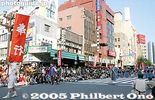
Magistrate Procession 奉行
|
|

Forging a steel phallus (old photo)The demon living in the vagina of the women bit the man's phallus each time. So one guy made a steel phallus and the demom broke his teeth.
|
|

The tallest kanto is 8 meters high. It is made higher by connecting bamboo pole extensions at the bottom. The more skillful men added more pole extensions than usual or fanned themselves with a fan while balancing the kanto. At halftime, everyone took down the kanto and they moved out. Another group of kanto masters came in and the spectacle restarted.
|
|
|

Children dressed for the chigo parade, Tsukiji Hongwanji, TokyoIt took a long time before they could get all the kids to settle down for the picture and to get all the mothers out of the picture.
|
|

Ropes are strung over the tree to protect it against the weight of snow.
|
|

The procession's highest-ranking official called Chokushi. An Imperial Messenger. The horse is highly decorated. 勅使
|
|
|

Jonai Bridge to Karatsu Castle城内橋
|
|
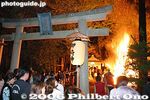
Torii at Misaki Shrine Fire Festival.
|
|

Gofuku-cho shopping arcade
|
|

Chichibu Shrine
|
|

Cheering section for Nagahama
|
|
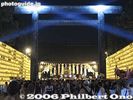
At night, 30,000 lanterns light up. A real summer spectacle.
|
|

Boat ride along the moat of Azuchi Castle.
|
|

Beachgoers frolick in the lake as the rowing boats arrive.
|
|

After it gets dark, the pile of straw is lit and people come to light their torches.
|
|

Carrying the boat.
|
|

Tossing a portable shrine, a common sight during the festival.
|
|

The parade route is quite long, and it's crowded along the parade route near Aomori Station.The parade route is quite long, and it's crowded along the parade route near Aomori Station. If you want plenty of elbow room while viewing, go toward the end of the parade route where the crowd is sparse.
In recent years, the Nebuta Festival has seen disturbances caused by gate-crashing, young hoodlums. A large police force is put in place to prevent trouble.
|
|

People pull the float along.
|
|
|
|

Moving the kite to launch point
|
|

Torch bearers enter
|
|
|

Kusatsu-juku was the fifty-second station on the Tokaido Road (following Ishibe-juku) and the sixty-eighth station (following Moriyama-juku) on the Nakasendo Road. During the Edo Period, Kusatsu was an important post town at the crossroads of both roads.The roof is shaped like a Honjin lodge, with a gate. 草津駅
|
|

A magistrate (bugyo) in Edo could be a regional governor or government minister.
|
|
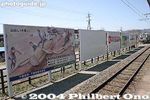
Billboard depicting Ki-otoshi (Log Drop) at Shimosuwa Station.
|
|
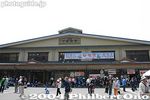
Shimosuwa Station on May 8, 2004. Here for the final three days of the Onbashira Matsuri's climax, the Satobiki when they haul the Onbashira logs to the Shimo-sha Shrines (Akimiya and Harumiya) and erect them.
|
|

The gateway to the Seta area is Karahashi-mae Station.
|
|

One of Japan's three Big Buddhas (after Nara and Kamakura). The statue was built by local coppersmiths in 1932, taking 30 years to complete.
|
|

Kehi no Matsubara beach, one of Japan's three most famous pine tree beaches.The other two being Miho no Matsubara in Shizuoka and Karatsu in Saga Pref.
|
|

Tokushima Awa Odori dancer
|
|

Aizu-Wakamatsu Station 会津若松駅
|
|

Kawagoe Festival
|
|

Marker and side road to Lord Gamo (Gamoh) Ujisato's gravesite. Near Aizu-Wakamatsu City Hall. Gamo Ujisato (1556-1595) was a feudal lord from Hino, Shiga Pref. He built Tsurugajo Castle and named the town Wakamatsu, after a place in his hometown.
|
|
|

Children dressed for the chigo parade (photo session), Tsukiji Hongwanji, Tokyo
|
|

Karasaki Pine Tree in Kenrokuen Garden 唐崎松
|
|

Entrance to Iimoriyama Hill, site of the Byakkotai "White Tiger" Battalion gravesite. In 1868, a unit of teenage warriors called Byakkotai (White Tiger Battalion) fought against the Emperor-backed Imperial forces encroaching their domain of Aizu
|
|

The Aoi Matsuri started in the early Heian Period in the 8th century as a national or state-sponsored event.
|
|
|

Nagahama Hachimangu Shrine torii on New Year's Day. Nagahama's most popular shrine for New Year's worship (hatsumode). MAP
|
|

Lord Ishida Mitsunari was born in 1560 in Ishida village in Nagahama, Shiga Pref. You can see the site of his birthplace by bus from Nagahama Station. Get off at the Ishida bus stop. MAPHis birthplace and former residence have monuments dedicated to this fallen but revered leader of the Western Forces which lost to Tokugawa Ieyasu at the Battle of Sekigahara in 1600. He was a protégé and main samurai retainer of Toyotomi Hideyoshi.
|
|

Seibu Ikebukuro Line train station entrance at Ikebukuro, Tokyo. It takes about 90 min. from Ikebukuro to Yokoze Station via Tokkyu express train. Cheaper trains take 2 hours.
|
|

Sumiyoshi Shrine is on the west side of JR Moriyama Station. This side has an area called "Fuke" written with the same kanji for "uwaki" (cheating on your partner).I wonder what married couples think of living in this area...
|
|
|
| 22497 files on 90 page(s) |
1 |
 |
 |
 |
 |
|